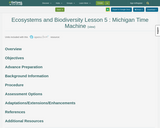
Students are introduced to a series of historical events that
contributed to the development of Michigan’s ecosystems of
today.
- Subject:
- Applied Science
- Environmental Science
- Material Type:
- Activity/Lab
- Lesson Plan
- Date Added:
- 12/10/2019

Students are introduced to a series of historical events that
contributed to the development of Michigan’s ecosystems of
today.
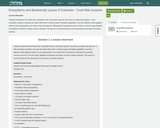
Students experience first-hand the competition that a nonnative species may have on native bird species. In this simulation students role play the native birds with a narrow range of feeding capabilities, and then observe what happens when a more opportunistic non-native bird is introduced. Although the example focuses on birds, it can be easily adapted to illustrate the effects of other invasive animals. This lesson is recommended as an introduction to the topic of invasive species.
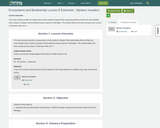
This short activity provides an opportunity to help students sharpen their questioning skills and become more familiar with a variety of aquatic and terrestrial invasive species of Michigan. This activity follows the same format as the Lesson 2 Extension Who Am I?

Students use a set of Invasive Species Picture Cards to learn about 30 invasive species affecting both aquatic and terrestrial ecosystems in the Great Lakes region. Students
use the cards to classify the organisms according to their habitat type, method of introduction, origin, and date of arrival. Students then identify strategies for preventing the
introduction of new species or the spread of existing ones.
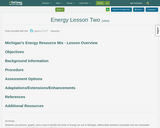
Students use pictures, graphs, and a map to identify the kinds of energy we use in Michigan, differentiate between renewable and non-renewable energy resources, and
identify the sources of Michigan’s energy resources.
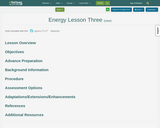
Students build a model turbine to observe how different energy resources can be used to turn a turbine, inquire how the interaction between a wire and a magnet generates
electricity, and investigate the different mix of energy resources used to generate electricity in Michigan, the United States, and the world.
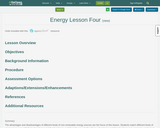
The advantages and disadvantages of different kinds of non-renewable energy sources are the focus of this lesson. Students match different kinds of energy resources with
their advantages and disadvantages, and then discuss whether these advantages and disadvantages are economic, ecological, or social.

The focus of this lesson is learning about the advantages and disadvantages of different kinds of renewable energy resources and their potential use in Michigan. Students
read about different renewable resources, watch a teacher demonstration, and match different kinds of energy sources with the advantages and disadvantages of each.
Students then compare the advantages and disadvantages of renewable and non-renewable resources and use the comparisons to write a letter to their state legislators.
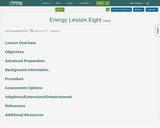
This lesson develops the concept of an ecological footprint. Students use data and tools to assess the impacts of their energy and resource consumption. They examine their
results and assess their impacts on the environment. Students discuss and compare their impacts and try to identify actions to reduce their footprints.
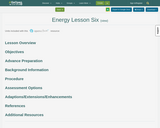
Energy conservation and energy efficiency are the focus of this lesson. Students learn how basic energy conservation and energy efficiency choices can save their family money,
reduce energy consumption, and prevent energy-related pollution. Students learn how to identify and fix air leaks, compare incandescent and compact fluorescent light bulbs,
and list ways they can conserve energy and increase energy efficiency in their daily lives.
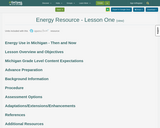
Students learn how energy consumption has changed over the past 100 years, why it has changed, and the impact it has had.
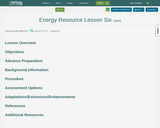
Energy conservation and energy efficiency are the focus of this lesson. Students learn how basic energy conservation and energy efficiency choices can save their family money,
reduce energy consumption, and prevent energy-related pollution. Students learn how to identify and fix air leaks, compare incandescent and compact fluorescent light bulbs,
and list ways they can conserve energy and increase energy efficiency in their daily lives.
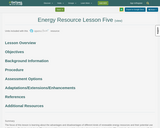
The focus of this lesson is learning about the advantages and disadvantages of different kinds of renewable energy resources and their potential use in Michigan. Students read about different renewable resources, watch a teacher demonstration, and match different kinds of energy sources with the advantages and disadvantages of each. Students then compare the advantages and disadvantages of renewable and non-renewable resources and use the comparisons to write a letter to their state legislators.
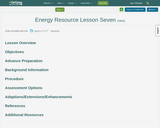
The lesson introduces the concept of a product life cycle and how it can be used as tool for the consumer to make more environmentally friendly product choices. The lesson uses the life cycle of a CD or DVD as an example to investigate the life cycle of an everyday product and examine options for reusing, recycling, or disposing of the item after its useful life.

Using this lesson plan students will be more aware of how plants and animals adapt to wildland fire. They will: Discuss the adaptive strategies of plants and animals to survive fire. Observe plants and animals in your local area. Design a plant or animal that is adapted for fire survival.
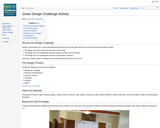
The Green Design Challenge is to brainstorm, prototype and present a design idea for a social entrepreneurship project focusing on green design that meets the design principles. Photo examples from ISKME's Teacher Innovation Workshop are included.
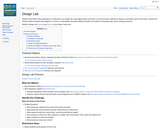
Maker Faire participants collaborate in ISKME's Design Lab, using digital stories and salvaged materials to design an innovative school of the future. The Design Lab features Makers Mauro ffortisimo Di Nucci's deconstructed piano and INKA Biospheric Systems' Vertical Garden; as well as Student and Teacher project examples that integrate art, science, sustainability, and green design inspire the creation of shareable open-source learning resources. This wiki page showcases photos and video from the Design Lab, open educational resources for teachers, and a step by step guide through the design process.
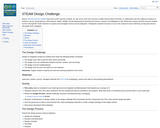
This wiki page documents the STEAM Design Challenge Activity ISKME facilitated during the SLANT Summer Institute at San Francisco Unified School District July 19-23, 2010.Participants designed prototypes for an arts integration project for students and posted their ideas on the wiki.

1.201J/11.545J/ESD.210J is required for all first-year Master of Science in Transportation students. It would be of interest to, as well as accessible to, students in Urban Studies and Planning, Political Science, Technology and Policy, Management, and various engineering departments. It is a good subject for those who plan to take only one subject in transportation and serves as an entry point to other transportation subjects as well. The subject focuses on fundamental principles of transportation systems, introduces transportation systems components and networks, and addresses how one invests in and operates them effectively. The tie between transportation and related systems is emphasized.
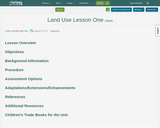
Students are introduced to air photos. They first view a neighborhood from a bird’s-eye view, a photo taken from a kite. They next compare two air photos of Shelby
Township, MI. The air photos show the land use change during the period from 1980 to 2010. The students compare, contrast, and use evidence from the air photos
to explore the changes.